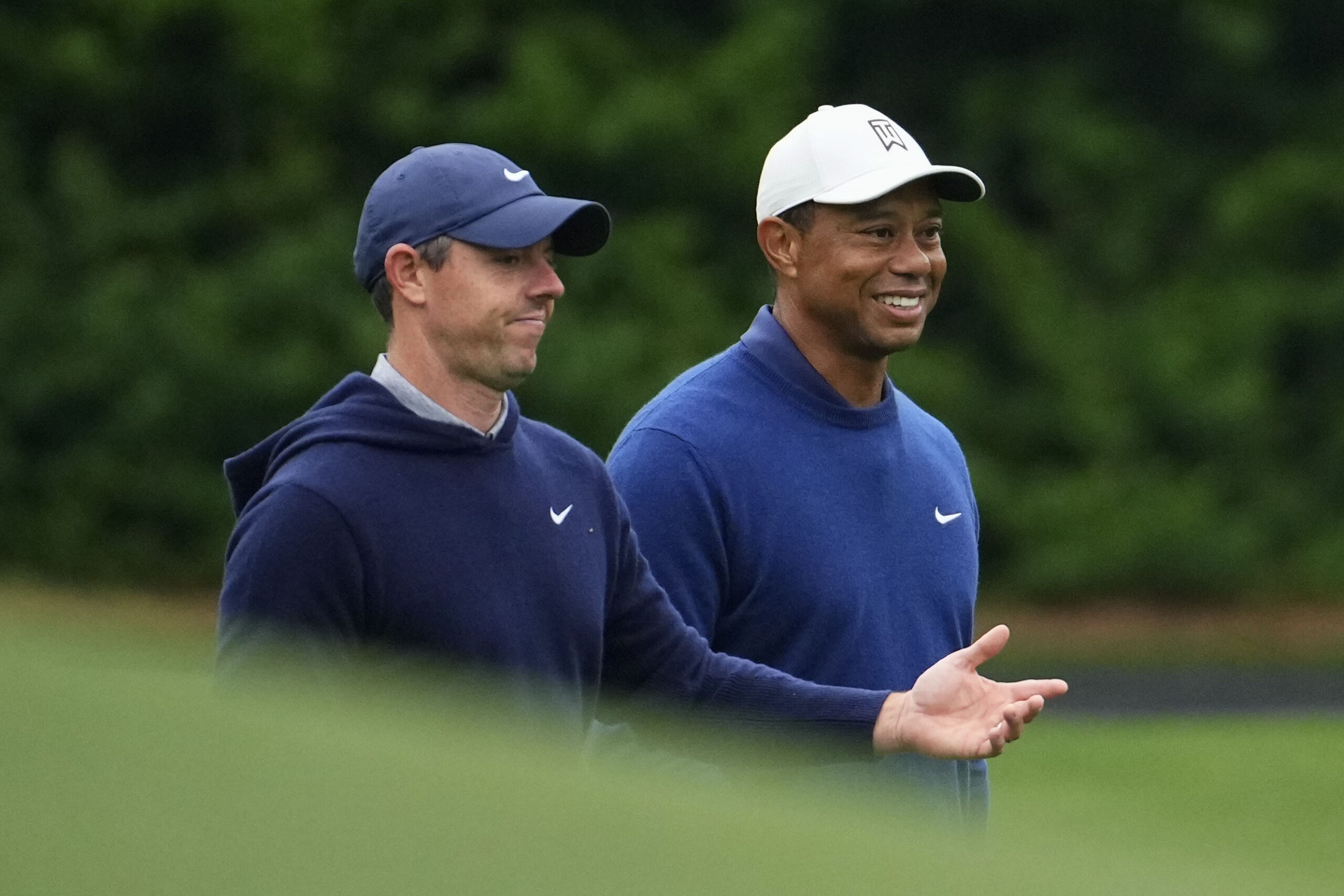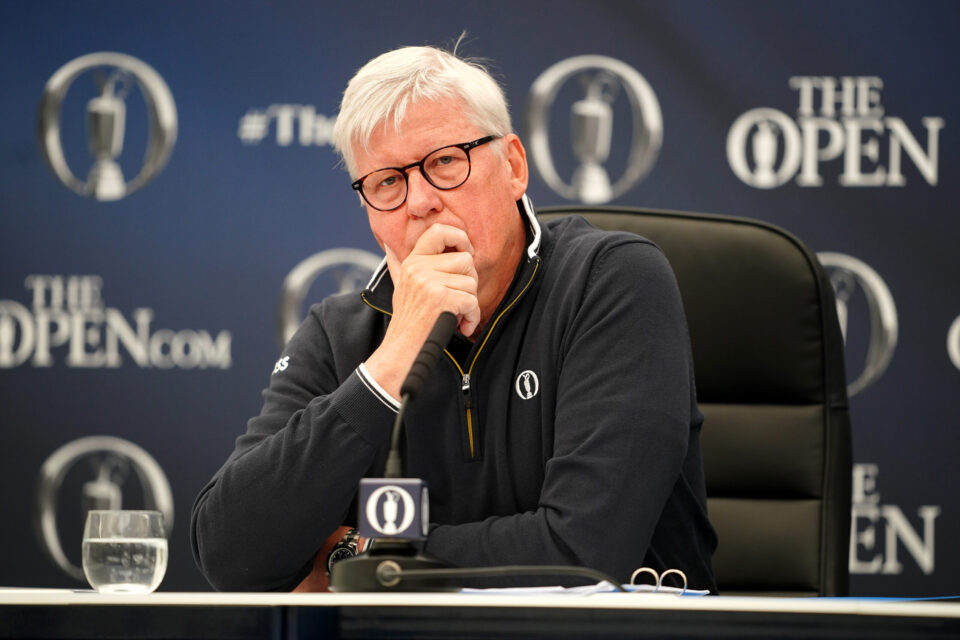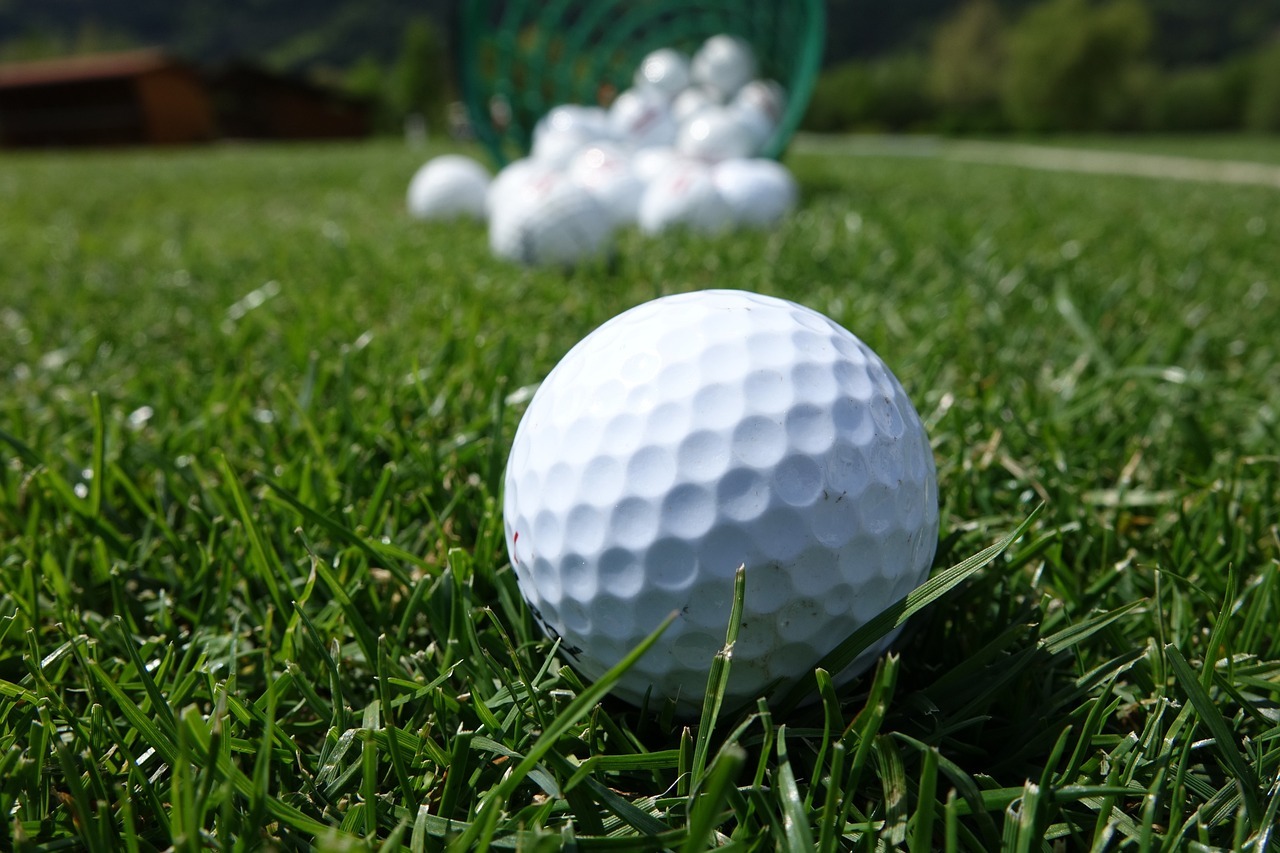When the USGA and R&A announced a year ago a revised proposed plan to roll back the distance golf balls attain the reaction was one of acceptance from some quarters, puzzlement from others and serious doubts elsewhere.
What’s indisputable is the spike in overall distances being reached. Moden drivers, in tandem with improved golf ball technology, in concert with enhanced swing efficiencies and physical conditioning, have pushed total yardage gains.
But that spike is predominantly coming from those competing at the highest of levels.
In 1997 John Daly broke the 300-yard barrier. Fast forward to the 2024 PGA Tour season and a total of 100 players were at 300 or more yards.
Concerns have long been stated by the two governing bodies that such continued increases have caused a clear imbalance between the proper role of distance and accuracy.
Club and ball technology have brought into reality larger-sized clubheads, longer shafts and more aerodynamically designed balls.
The USGA and R&A have also raised concerns that the staging of key championships – the US Open and Open most notably — are forcing host clubs to continue to extend overall yardages. In some cases, that option has become impossible to achieve given the boundaries of such properties.
Case in point when Tiger Woods won his first Masters in 1997 the total length of Augusta National Golf Club was 6,925 yards. When Woods claimed his 5th green jacket in 2019 the length of the course played 7,475 yards.
The proposed plan by the USGA and R&A calls for a rollback of golf balls starting January 1, 2028 for elite level competitions. Such competitions would mean inclusion of PGA Tour events and others of similar note.
By January 1, 2030 – the golf ball roll back would be extended to all levels of golfers whether playing in tournaments or simply recreational.
There’s just one small but crucial element missing — acceptance.
Neither the PGA Tour nor the PGA of America have stated 100% alignment with the reforms announced by the USGA and R&A. The silence has been both deafening and noticeable.
Historically the two governing bodies have been in the lead in regards to the formulation of the rules for golf stretching back well over 100 years. However, the area of equipment regulation brings into play a wide array of different parties. Some of which have a vested financial interest in how such matters are determined.
The rules of golf have been voluntarily accepted by the broad range of stakeholders in the sport. What’s important to realize is the USGA and R&A have no direct jurisdiction on how tournaments are conducted beyond the ones they administer.
Given the weekly rollout of events via the PGA Tour and the daily interactions all types of local clubs have via PGA of America members — the need for acceptance from the two groups is a prerequisite in getting momentum going forward in securing acceptance.
If the PGA Tour were to balk and adopt its own rules relating to golf balls and clubs a major fissure would occur.
If the PGA of America were to follow suit and have its 30,000+ members doing likewise at the local club level, then the primacy of the USGA and R&A would be clearly undercut.
Interestingly, one of the key constituencies for the PGA Tour and PGA of America are the major equipment companies.
Soon after the USGA and R&A announced their decision the pushback was swift in coming.
David Maher, Acushnet CEO, provided a clear point-by-point pushback. While still advocating continued collaboration Mr. Maher was just as clear in providing a clear counterpoint.
***
Excerpts below —
Many important stakeholders do not see distance as a problem the way the governing bodies do, and therefore come to differing conclusions about how to proceed to ensure the best possible outcome for the sport.
We support the position of the PGA TOUR and others that there are many areas of focus at the elite level, including initiatives related to golf course setup and conditioning, and other competitive variables which, if desired, can limit the effects of distance while also providing the opportunity for a diverse skill set to succeed at the highest level.
It is also Acushnet’s position that existing golf ball regulations are effective and stand the test of time. Golf balls are already tightly controlled for initial velocity, overall distance, size, weight, and uniformity. As a result of existing initial velocity and overall distance regulation, ball speeds have been moderated as was the intent of the rule.
Not all sports have endured from generation to generation the way golf has endured, and the governing bodies deserve credit for having effectively balanced the forces of tradition and technology. This has helped to preserve golf’s unified appeal and values while encouraging innovation that has helped to make the sport more relevant and enjoyable.
We believe that further collaboration and cooperation with the R&A, USGA and other stakeholders is critical prior to moving forward with such a significant equipment regulation change. We continue to advocate for stakeholders to convene to have a meaningful examination of this decision and its consequences, and to discuss alternatives as we look to protect golfers’ enjoyment of the game and the health of golf courses around the world to ensure golf’s promising future.
***
In March 2023 when the USGA and R&A announced the original roll back of the golf ball – they provided a “model local rule” permitting recreational players to use current golf ball specifications while mandating those at the elite level using a rolled back golf ball.
During the comment phase the outcry against this proposal was clear. The major ball manufacturers were not in favor of a bifurcated remedy where one ball would be used at the elite level and the existing golf ball specs remaining in place for those at the recreational level.
Key touring professionals such as Tiger Woods favored bifurcation. The 15-time major winner referenced how baseball uses wooden bats at the Major League level but aluminum at lesser levels.

Rory Mclroy also weighed in saying, “Elite pros and ball manufacturers think bifurcation would negatively affect their bottom lines. when in reality, the game is already bifurcated. You think we play the same stuff you do? Bifurcation was the logical answer for everyone, but yet again in this game, money talks.”
One of the key dimensions on the roll back proposal is that elite level players commence in 2028 – with the rest of the golf population phased in two years later in 2030.
The first head scratching puzzle is what constitutes “elite competitions?” No doubt players such as Scottie Scheffler and Xander Schauffele would be covered but how far down the pecking order does “elite competitions” extend?
Does that include State Amateur tournaments or even extend to such parochial events as club championships? It is possible interpretations will vary given the many different State and Regional golf associations dotting the landscape? While uniformity is the stated goal – the likely end game could mean a more fractured scene littered with confusion.
Even when 2030 rolls around will recreational players want to play a rolled back golf ball? Will ball manufacturers have an appetite to produce such a limited distance ball and will they continue to manufacture existing balls used today?
When 2030 occurs how will individual clubs monitor what specific golf balls are used so that uniformity is consistent across the board — especially in events of note?
Estimates of the specific roll back numbers show a modest decrease in distance with larger losses for those with faster club speeds losing anywhere from 10-15 yards. The USGA and R&A have stated the loss of distance for most recreational players will be minimal. “Would I have liked the difference (yardage rollback) to be larger? I would have but I wasn’t willing to upset the amateur game to do it,” said Whan.
Nonetheless, the average male driver only carries a tee shot 215 yards and the average female player falls in the 150-yard area. Will reducing such modest distances cause a major backlash against a rolled-back ball?
Given the human cry from recreational players always wanting more distance the thought of a rolled back golf ball will not likely be music to their ears.

Even USGA CEO Mike Whan has stated the difficulty in trying to make a case for corrective action when the words “rolled back” are mentioned.
Woods and McIlroy are in alignment that golf played at the super elite level is a different game when held against the bulk of what happens recreationally. Undoubtedly that’s so. While the concept of playing the same game appears true, the actual practicality when matters are tested says otherwise.
The two governing bodies realize that continuing to exert influence will require a more interactive public relations campaign. There is also the possibility that additional modifications could happen before the 2028-time frame.
Possible other remedies could include:
Reducing the total number of clubs one can use from 14 to 10, specifically for those competing in designated events. This would elevate the need for more creative shotmaking while still permitting equipment companies to produce such clubs. Recreational players could continue with a max of 14.
Mandate no club is more than 56 degrees of loft. Wedges play a critical role in scoring and eliminating clubs with greater lofts will return a greater emphasis on creativity around the putting surfaces.
With the future focus likely to fall on drivers, place a requirement no such clubs are longer than 44 inches and reduce head size from the existing 460 cc to a lesser number.
Will the USGA and R&A blink from their current proposal? If the two organizations were able to modify their original position to what is now on the table there’s nothing to prevent them from doing so again.
However, the reach of the governing bodies cannot be underestimated by the PGA Tour, PGA of America and the equipment companies since it’s likely three of the existing four men’s major championships will feature a rolled back golf ball starting in 2028.
The lone holdout could well be the PGA Championship and if the sport were to have different types of balls in play for different events the resulting hodge-podge would only mean more confusion particularly when scores are recorded for posterity’s sake and one’s overall stature in the game is assessed.
What’s amazing is that among the major sports – golf is the only one in which individual competitors bring their own golf balls to an event. It may be time at the highest levels of competitions for that to change too.
Adding even more uncertainty is the possibility other equipment adjustments are already on the radar screen. There’s been discussion that next on the USGA / R&A agenda is curbing distance gains made by drivers.
Martin Slumbers, the R&A CEO, who is leaving his position at the end of this year, stated the governing bodies were keen about the gains made by drivers but opted not to include them with the golf ball modifications at the same time.

During his final press conference at this year’s Open Championship he stated, “We work with the industry, deeply conscious of the change that we’re putting into the system, and all our focus will be on getting the golf ball 2028-2030, but rest assured we’ve not lost sight of the driver.”
One can only imagine given the current pushback on the “new” golf ball specs how the concerns will only swell if/when the driver debate starts in earnest.
Equipment discussions have long been part of the game. From the time of wooden shafts to the inclusion of steel to graphite. Years ago, there was a serious debate on whether to continue with two different size golf balls – the British ball of 1.62 diameter versus the American ball of 1.68. Eventually, the former was eliminated.
Making rules for any situation is never an easy matter. One sees that in the political world when laws are hotly debated and contested vigorously. A zero-sum outcome is not the answer here.
“Bifurcation was the logical answer for everyone, but yet again in this game, money talks.”-Rory McIlroy-
But there are voices that have long advocated for the USGA and R&A to keep maters in check. The two organizations creped along and now the genie is clearly out of the bottle.
Why was nothing done sooner when traditional wooden heads were replaced with metal ones? The involvement of lighter shafts allowed for larger-sized clubheads and longer shaft sizes. Again, nothing meaningful done.
Golf purists have long viewed the USGA and R&A more critically. Believing both groups are more concerned in avoiding possible litigation from equipment companies instead of showing backbone in preserving the game.
After successfully navigating through the pandemic, the sport of golf reached new heights with a steady stream of new players eager to join the ranks. The strength of the game was viewed as unsinkable.
Keep in mind, unsinkable is the same word many applied to the Titanic on its maiden voyage.
The demise of that famed ocean liner is seared in history. The self-imposed arrogance prompted certain people then to believe in their own infallibility. The pathway for golf need not be the same but clear leaks in the boat called golf exist.

Calm waters of today can quickly become choppy and problematic to navigate. No one in the sport gains when chaos and finger-pointing escalate.
The main stakeholders have co-existed even when operating in their own silos.
Unquestionably, the speed of technology is rapidly advancing in all avenues – golf is not alone in that regard. Guard rails are needed but they have to be mindful of the constituencies they wish to impact.
Can the general interest of the sport be secured when often times self-interest is the primary motivation given the slavish devotion to bottom-line profits?
The give and take dynamic must center on consensus that can build a golf boat able to sail smoothly in the years ahead.
The world of golf has just over two years to think long and hard because as Ed Harris said in Apollo 11 — “failure is not an option.”
The clock is ticking.





